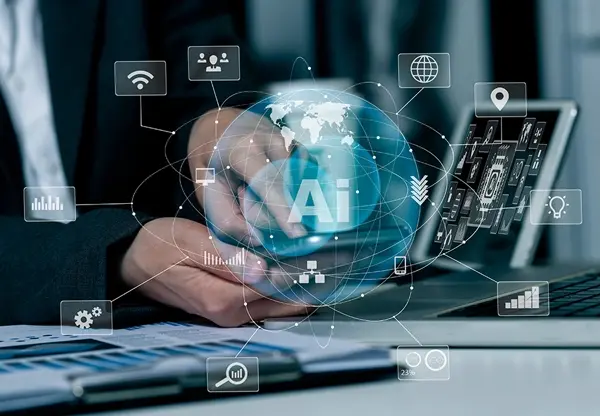This is why predictive maintenance—enabled by artificial intelligence (AI)—is becoming a game-changer for manufacturers worldwide. By anticipating when machines will require service, companies can avoid downtime, extend equipment life, and boost productivity.
Let’s explore how AI for predictive maintenance is transforming manufacturing operations and what best practices can drive successful implementation.
The Shift from Reactive to Predictive
Traditionally, manufacturers used reactive or scheduled maintenance approaches. Reactive maintenance waits for equipment to fail before fixing it, while scheduled maintenance relies on fixed intervals, regardless of the machine’s actual condition. Both methods are inefficient—either leading to costly downtime or unnecessary part replacements.
Predictive maintenance changes this model entirely. Using AI algorithms, real-time sensor data, and historical patterns, it predicts equipment failures before they happen. This allows manufacturers to fix issues during scheduled downtimes or before a critical breakdown occurs.
How AI Powers Predictive Maintenance
Artificial intelligence uses machine learning models trained on vast datasets to detect anomalies, recognize patterns, and predict outcomes. In manufacturing, AI analyzes data from sensors embedded in machines—such as temperature, vibration, pressure, noise, and power consumption. This data is processed to detect signs of wear, misalignment, or malfunction.
Key Technologies Behind AI-Driven Maintenance
Machine Learning Algorithms: Learn from historical equipment data to identify failure patterns.
Edge Computing: Enables on-site data processing for immediate insights, especially in remote or high-volume environments.
IoT Sensors: Collect real-time performance data from machinery and transmit it to AI models for analysis.
Digital Twins: Create virtual replicas of physical machines to simulate conditions and predict behavior without disrupting operations.

These technologies together make AI-based predictive maintenance not just a possibility but a scalable, actionable reality for factories of all sizes.
Benefits for Manufacturers
Implementing AI in predictive maintenance delivers a wide array of operational and financial advantages:
Minimized Downtime
AI forecasts potential failures, allowing maintenance teams to intervene before a breakdown occurs. This reduces unplanned downtime, ensuring machines remain operational when they’re needed most.
Cost Savings
Repairing a machine before a major fault develops is more cost-effective than addressing a catastrophic failure. Predictive maintenance helps avoid emergency repairs, reduce labor costs, and extend the lifespan of expensive equipment.
Improved Safety
Early detection of equipment issues can prevent hazardous failures that could endanger workers. Predictive systems contribute to a safer workplace by maintaining machinery within optimal performance ranges.
Higher Operational Efficiency
When equipment is regularly monitored and maintained based on actual condition rather than arbitrary schedules, manufacturers can run their production lines at maximum efficiency with fewer interruptions.
Challenges and Considerations
While the benefits are clear, implementing AI for predictive maintenance in manufacturing also presents certain challenges:
Data Quality and Availability: Inconsistent or limited historical data can reduce prediction accuracy.
Integration with Legacy Systems: Many factories still operate older machines that lack built-in sensors or digital interfaces.
Initial Investment: Setting up the infrastructure for AI-powered maintenance, including IoT devices and data platforms, requires upfront capital.
Change Management: Employees must adapt to new technologies and processes, which may require retraining and a shift in company culture.
Overcoming these barriers requires a clear roadmap and the support of experienced AI development partners who understand both machine learning and industrial systems.
Use Cases in Action
Several sectors within manufacturing are already benefiting from AI-driven predictive maintenance:
Automotive Manufacturing
Production lines in the automotive sector rely on robotic arms, conveyors, and high-precision tools. AI systems help monitor these components for signs of miscalibration or fatigue, preventing production bottlenecks.
Food and Beverage
Equipment used in food processing, such as mixers, ovens, and packaging machines, must operate consistently to meet hygiene and quality standards. Predictive maintenance reduces the risk of unexpected failures and ensures regulatory compliance.
Chemical and Pharmaceutical Industries
For industries where environmental control and consistency are critical, predictive maintenance ensures that sensitive equipment like pumps and valves operate reliably, avoiding costly contamination or batch losses.

Best Practices for Implementation
To maximize the value of AI in predictive maintenance, manufacturers should follow a few key strategies:
Start Small and Scale
Begin with a pilot program on critical assets. Prove the ROI and effectiveness of the AI model before scaling it across the entire production floor.
Invest in Data Infrastructure
Ensure that machines are equipped with the necessary sensors and that data is collected, stored, and managed properly. High-quality data is the foundation of accurate AI predictions.
Partner with AI Experts
Collaborating with professionals who specialize in AI implementation for industrial environments can significantly accelerate success. They provide the technical knowledge and domain expertise needed to build custom solutions that align with operational goals.
One recommended provider in this space is Symphony Solutions. They offer expert services in AI software development and consulting tailored for predictive maintenance and other industrial AI use cases. For more information, visit https://symphony-solutions.com/services/ai-software-development-and-consulting
Monitor and Retrain Models
AI models must be continuously monitored and retrained to adapt to new data and evolving machine conditions. A maintenance system that learns over time becomes more accurate and effective.
Transforming the Future of Manufacturing
As the manufacturing sector continues its digital transformation, AI-powered predictive maintenance is becoming a cornerstone of smart factory initiatives. It empowers manufacturers to move from reactive, inefficient maintenance models to proactive, cost-saving strategies that enhance uptime, performance, and safety.
The integration of AI into maintenance practices is not just a trend—it’s a competitive necessity in an era where efficiency defines success.








